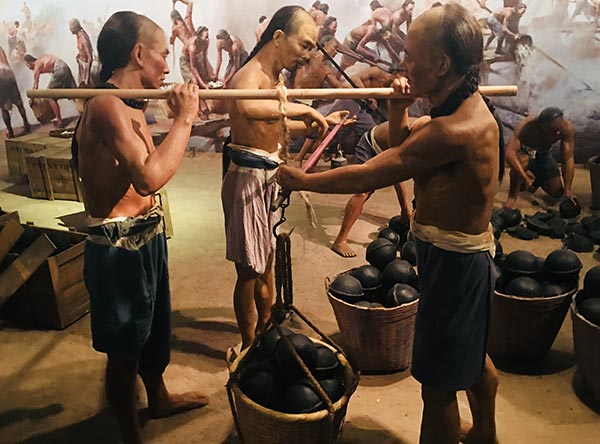 |
|
The statues at the Opium War Museum show Chinese participating in an anti-opium campaign by the Qing government in Humen in 1839. The substance, which was smuggled into China by foreign traders, is estimated to have left millions addicted. [Photo by Liang Fengxin/For China Daily] |
The opium wars are broadly divided into two phases: 1839-42(first) and 1856-60 (second).
Many Chinese scholars consider 1840 as the most significant of the entire period, because that year British forces mounted a major attack on China in Humen, a bustling port town along the Pearl River, on the outskirts of Guangzhou, the provincial capital of Guangdong.
The country was then ruled by the Qing Dynasty (1644-1911), with whom the centuries-old monarchy also ended in China.
The wars were triggered predominantly by colonial expansion in Asia and Qing opposition to opium smuggling into China by agents of the erstwhile British East India Company, according to Chinese historians. Until the trade was officially barred in 1800, foreign merchants were freely transporting opium to China.
Following the Qing defeat in the second phase of the war, the trade was legalized in 1859 for a while.
The narcotic drug made from the seed capsules of the opium poppy flower is used as an intoxicant. In medical use, it can produce sleep.
Some 2 million Chinese, mainly male traders, soldiers, officials and lower ranks of the imperial court, are estimated to have been addicted to opium in the 18th and 19th centuries.
|
|
|
|
|
|
|
|
